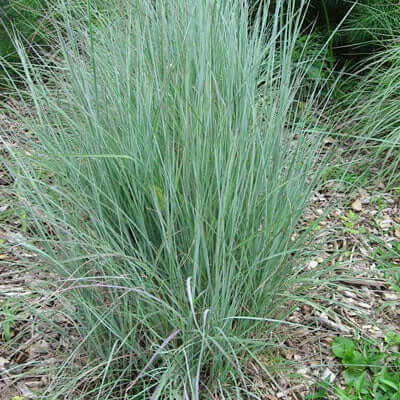Bushy Bluestem Grass is an ornamental grass that attracts birds and butterflies while providing nesting material for bees. Thriving in many conditions, it is resistant to a myriad of temperature changes. Thankfully, it is very resistant to deer and should help produce a solid and appealing lawn for those who want a high-water grass that thrives in autumn.
Bushy Bluestem Grass Appearance
Expect the flowers of this grass to create a silver color that is quite attractive when in full bloom. In particular, this grass looks best in full sunlight, as it makes a reflection off the surface that will catch the eye and intrigue homeowners and people who drive past their yards.
You can expect various colors throughout the season, including a blue-green texture in the warmest months and a lighter color in the winter. When properly maintained, this grass spreads far across your lawn and rarely bunches up the way similar species may.
Bushy Bluestem Grass Growth Traits
This Bushy Bluestem grass has a fibrous root system, which can spread quite quickly over a large stretch of land. Expect it to grow as high as 3-6 feet without proper maintenance and trimming. Anticipate leaves of alternate arrangement with straight appearances.
Typically, this grass thrives best in the autumn and produces a green or blue-green leaf that turns a copper color in the winter. Regular mowing and a little fertilizer before the growing season should help to transform this grass into a more potent variety.
Bushy Bluestem Grass Bloom Details
You can expect this bushy bluestem grass to produce white and grow textures in full bloom. Blooming typically begins in early August and stretches to the warmest times of November. Though it naturally thrives best in hot-weather areas, it will go dormant during the winter to prevent grass death.
As a result, this species is found as far south as Florida, Texas, and Central America and as far north as Alaska. Expect it to grow best in moist areas in a grassland environment, as it typically needs these unique environmental conditions to thrive to the full range of its possible strengths.
Bushy Bluestem Grass Planting Information
When planting this growth, the soil needs vary from clay, loam, and sand. Typically, it does best with slightly disturbed or aerated soil with a sterile atmosphere. It can tolerate both salinity and poor drainage and, in some cases, may thrive best when drainage is not at its finest. This grass needs a high water concentration to grow to its fullest potential.
This grass is very tolerant of heat and even does well in colder temperatures meaning it can be found as far north as Alaska. It will require full sun and a high content of moisture. As a result, regular watering may be essential, particularly in areas like Arizona with minimal rainfall. Without this type of rain, this species will likely die off fairly quickly and leave large lawn patches.

